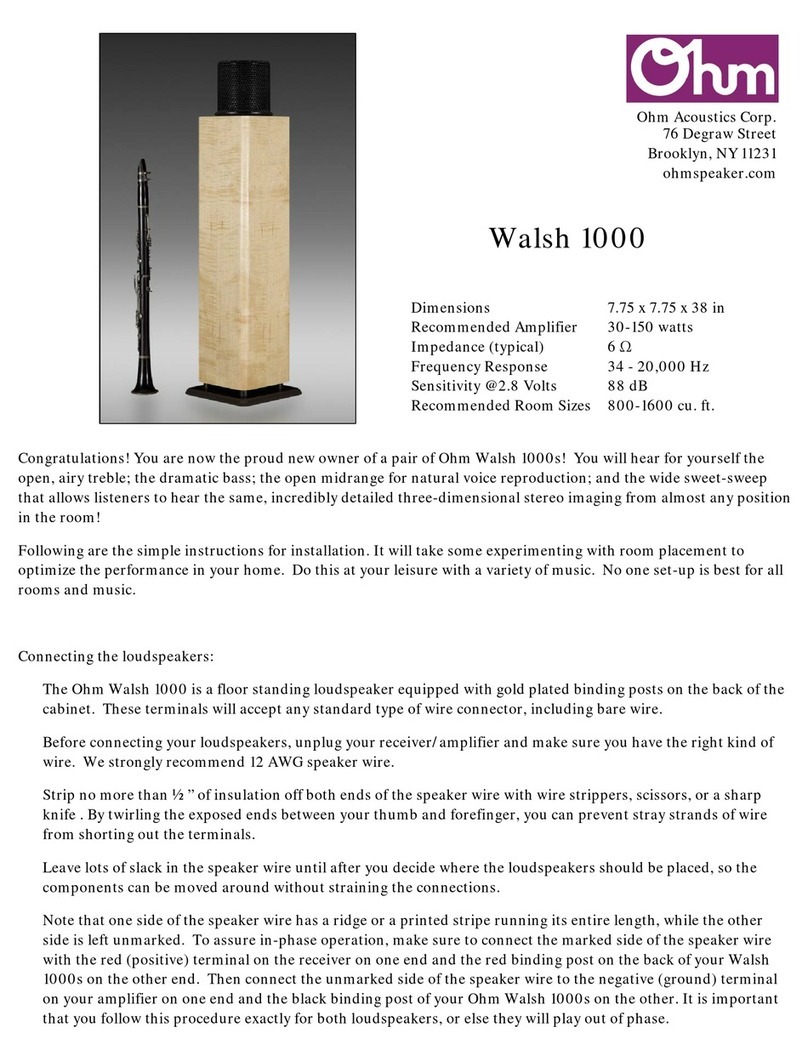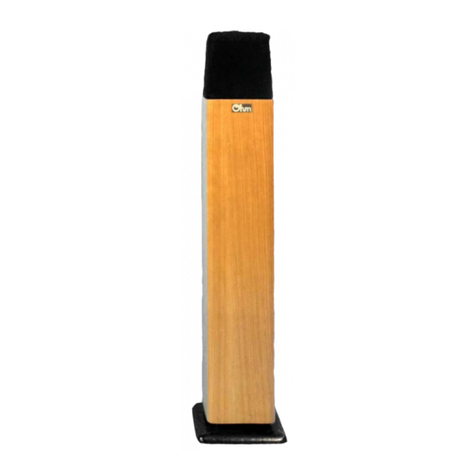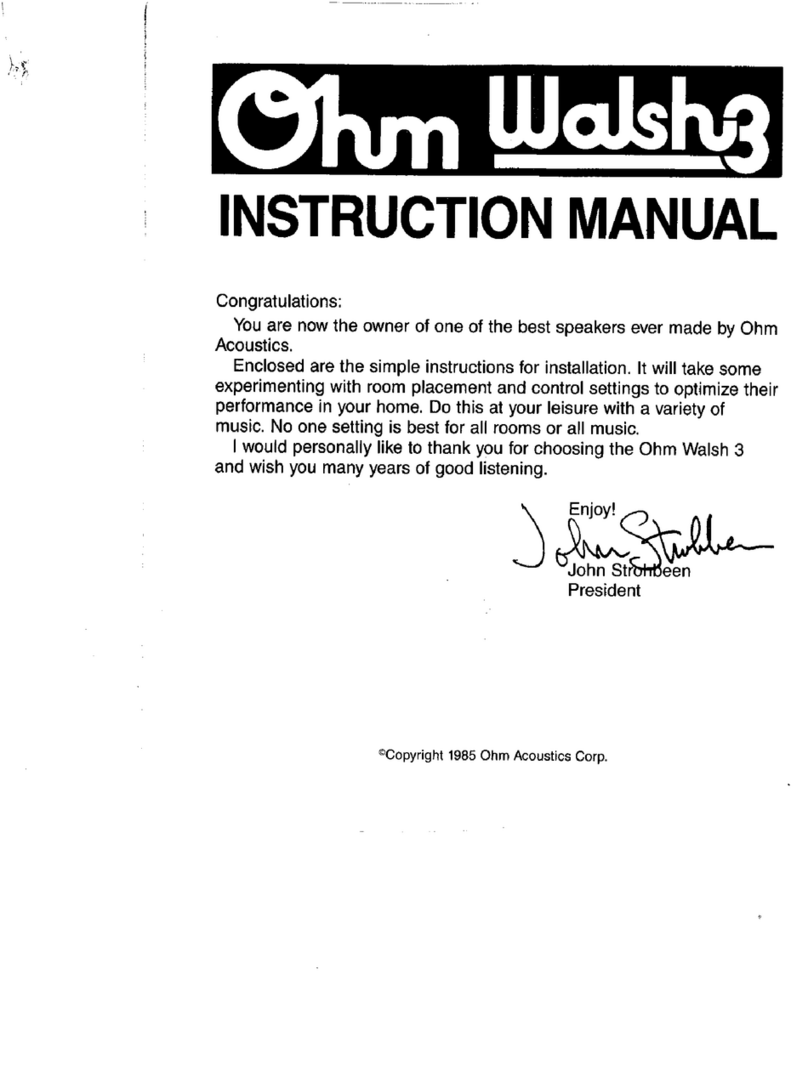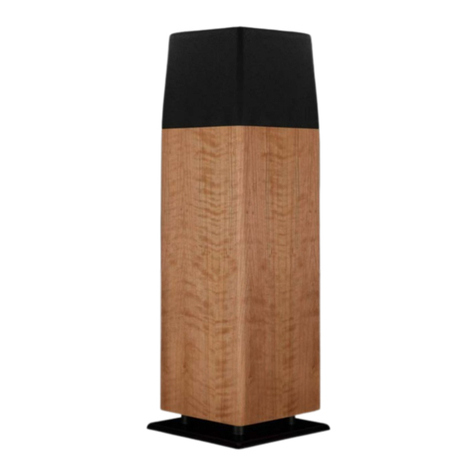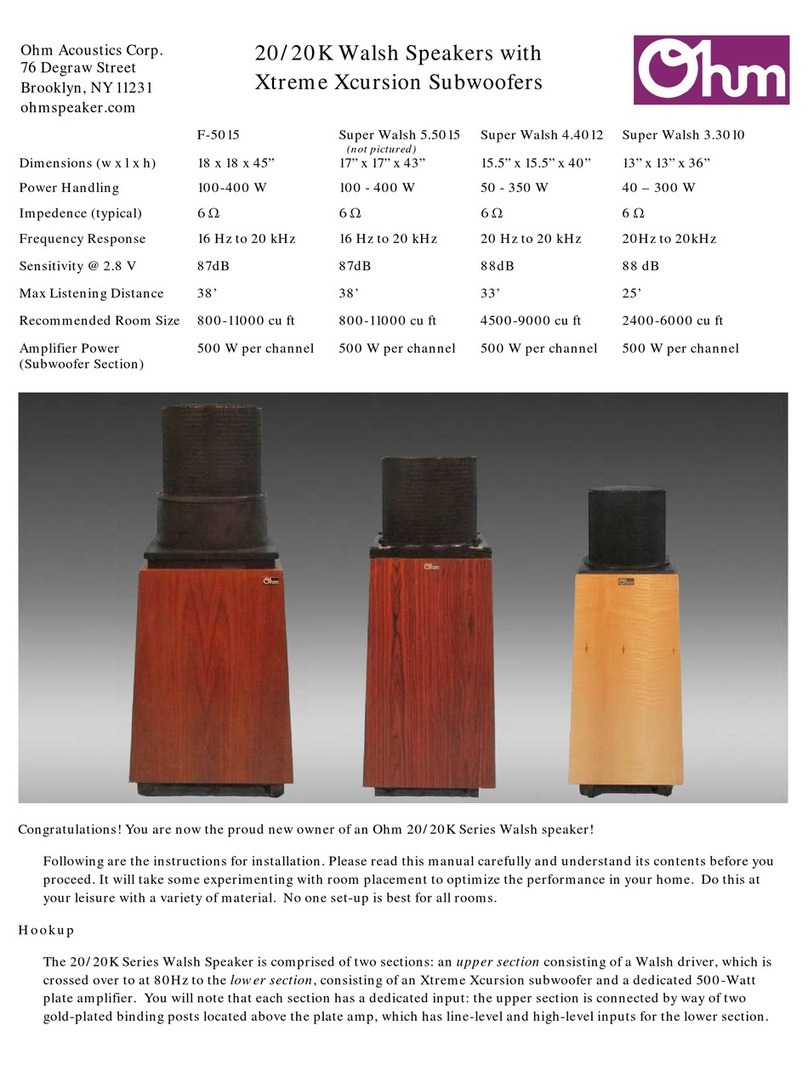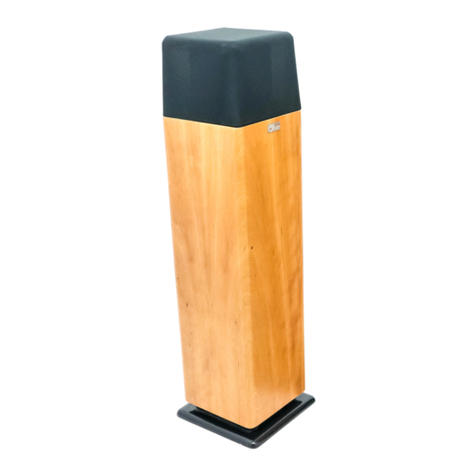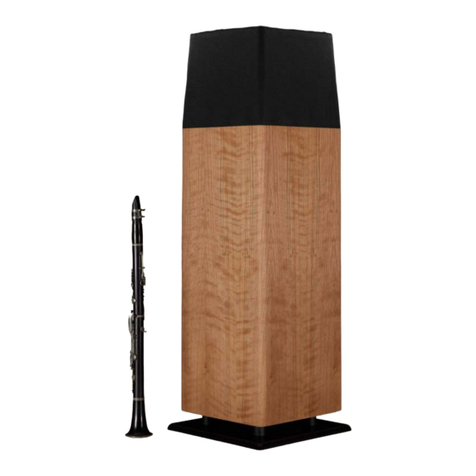
Before plugging in your amplifier/receiver, be certain the power is turned off and the volume control is turned all
the way down. After plugging in and turning on the amplifier/receiver, slowly increase the volume until the
desired level is achieved. This procedure will prevent sudden power surges from damaging your loudspeakers.
Placing the loudspeakers in you listening room:
The Ohm Walsh 3000 is designed asymmetrically, so that when properly positioned in the room, they will
produce sonic mirror images. No matter where you choose to place your loudspeakers, make sure that the
stickers under the cloth grill frame that read “aim toward center of room” are aimed toward the center of the
room, and that they can “see” each other.
The Ohm Walsh 3000’s wide dispersion and special method of sound transduction produce excellent results
when the loudspeakers are placed 6 to 12 feet apart. The loudspeakers should never be farther from each other
than they are from the listener. As a general rule, the distance between the loudspeakers will determine the
apparent width of the sound stage. Individual experimentation will determine just how wide you would like the
stereo spread in your listening room to be.
Placement of the loudspeakers in relation to wall surfaces affects bass performance. The closer the loudspeaker
is to a wall or corner, the louder the output will be in the range below 150 Hz.
Bringing the speakers away from the front wall will also affect the apparent height of the stereo image. We do not
recommend placing the speakers more than two feet away from the front wall. For best imaging, the front wall
should be reflective and dispersive – not absorptive.
If you want more treble, rotate the speakers outward. If you want less treble, rotate the speakers inward.
Caution!
Although your Ohm Walsh 3000s have been rated to be used with amplifiers of up to 250 Watts per channel, it is
possible to damage your loudspeakers with smaller units. Heavily compressed music such as most kinds of rock,
dynamic peaks in classical music, accidentally dropping the tone arm onto the record, or connecting devices into
a live signal path can produce an inordinate amount of distorted power (as much as ten times the rated amount!)
which is fed directly to the loudspeaker, and could lead to permanent damage.
Warning!
DO NOT remove the perforated metal can that encases the driver. The design of the Ohm Walsh 3000
incorporates several critically placed transmission blocks. This acoustically transparent perforated metal can has
been permanently bonded to its housing to protect precise alignment and performance by these blocks. Removal
or damage of the can will seriously impair performance and void the warranty.
If you have any questions, give us a call!
Toll free: 800-783-1553
Outside the US call: 718-422-1111
Write to us at ohmspeaker@aol.com
Good Listening!
John Strohbeen
President, Ohm Acoustics Corp.
